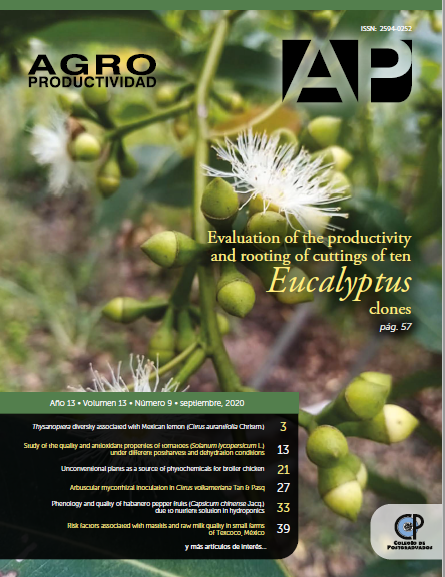Growth and nutritional value of the silage of two cultivars of Pennisetum purpureum at different ages Growth and nutritional value of Pennisetum
##plugins.themes.bootstrap3.article.main##
Keywords
Resumen
Objetive: To evaluate the growth, chemical composition and quality of the silage of 45 d and 60 d cuts of Pennisetum purpureum sp. Gigante and Pennisetum purpureum cv. Taiwan grasses.
Design/methodology/approximation: The study took place at the Germplasm Bank of the Rosario Izapa Experimental Field in Tuxtla Chico, Chiapas, Mexico. Chemical analysis of the silage determined crude protein (CP), crude fat (CF), crude fiber (CF), ash (A), neutral detergent fiber (NDF), acid detergent fiber (ADF), and pH. Plant height, leaf length, leaf width and stem diameter were also determined. A completely randomized design was used with three repetitions per treatment as per PROC GLM and means comparison using the Tukey procedure.
Results: The CP content of both grasses decreased in the 45 d to 60 d period; from 7.18 % to 5.36 % in Taiwan grass and from 7.53 % to 6.05 % in Pennisetum sp. Gigante. Plant height, length and width of leaf, and stem diameter were greater in the Taiwan variety (P<0.05) at 30 d, 45 d and 60 d; the pH of the silage was similar in both grasses evaluated (P>0.05) at 45 d and 60 d.
Study limitations /implications: A review during low water periods is required (December-April).
Findings/conclusions: Taiwan grass registered a greater growth rate in all periods; while Gigante grass showed higher nutritional value at 45 and 60 days of cutting.

